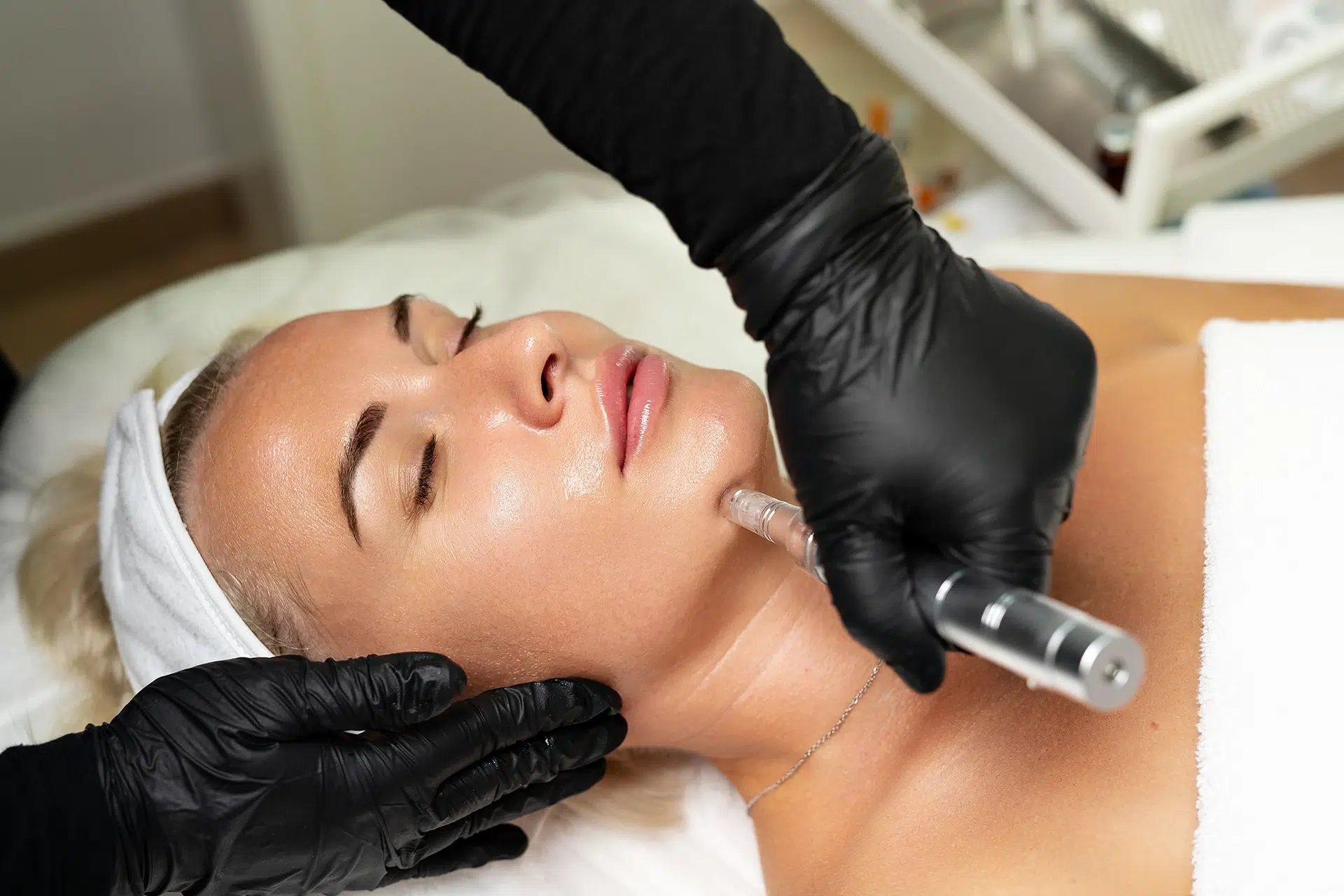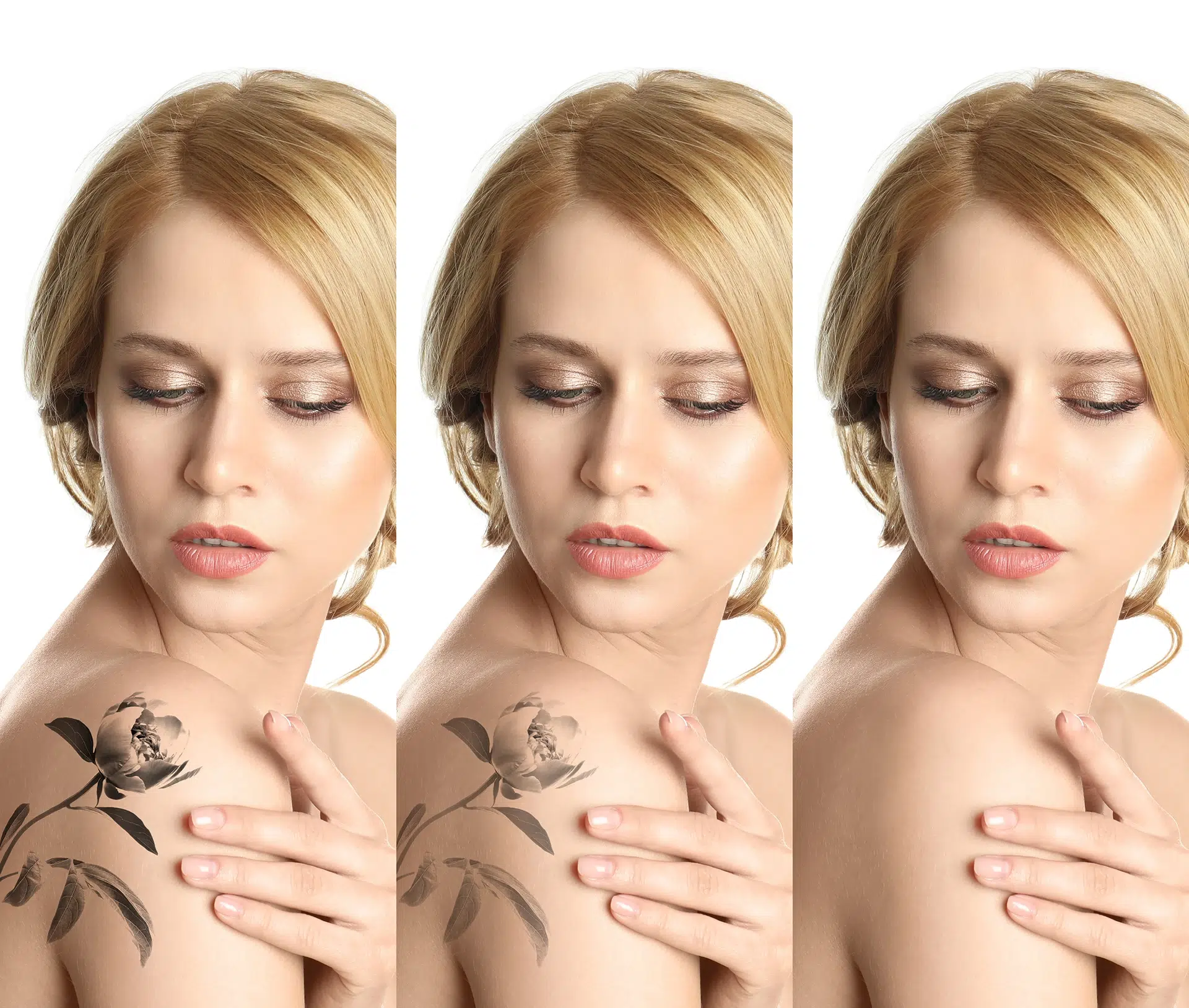A chemical peel is a skin treatment for the face, neck, and hands. A chemical solution is applied to the skin that exfoliates and finally peels off. The fresh skin layer will be softer and with fewer wrinkles. However, as the new skin heals, it will be sensitive to the sun for some time.
A chemical peel is one of the most common cosmetic procedures in the United States and is used for the rejuvenation of the skin. According to one report, close to 1,300,000 chemical peel treatments happened in the United States. Due to the advancements in the field, treatment has become more non-invasive and delivers effective results. However, there are some chemical peel side effects that an individual should know before treatment.
Read on to learn more about the various aspects of chemical peel treatment.
What Are the Types of Chemical Peeling?
Chemical Peel Treatment is effective for various skin-related issues and can be categorized into three types:
1. Superficial Chemical Peeling
Superficial chemical peeling treats wrinkles, acne, freckles, and dryness. The procedure usually completes within two to five weeks.
2. Medium Chemical Peeling
Medium chemical peeling removes the epidermis (the outer layer of skin) and develops a layer on the dermis (the middle layer of skin). Sometimes, the procedure is repeated if the desired results are not achieved.
3. Deep Chemical Peeling
Deep chemical peeling penetrates deeply into the skin layers. Since the peeling happens from the deep within, an individual can have desired results.
See Also: How Should You Prepare for a Chemical Peel Treatment?
What Are the Major Side Effects of Chemical Peeling?
Firstly, it is important to understand that, like any other treatment, chemical peeling also has some side effects post-treatment. Since there are three procedures, there are also associated chemical peel side effects. Therefore, consulting a doctor before the procedure is important to avoid drastic results. The side effects of chemical peeling are:
- Itchiness
- Redness
- Skin infection
- Skin tissue injury
- Scars on the treated area
Superficial chemical peeling side effects are temporary and go away within a few days. The symptoms can take weeks to repair in the case of medium chemical peeling. However, the side effects include:
- Skin redness, also known as Erythema
- Minor scarring
- Swollen skin
- Minor irritation
- Redness around the treated area
- Removal of skin
The skin will no longer have issues with deep chemical peeling as it works from the deep level compared to the other procedures. Despite being an effective treatment, the results may vary from weeks to months and years. Side effects of deep chemical peeling are:
- Hypo-pigmentation is skin patches that are different from the entire skin tone.
- Severe skin infection on the treated area.
- Skin wounds and cracks.
- Heart, liver, or kidney damage
How Much Do Chemical Peels Cost?
The standardchemical peel cost is estimated to be $196. However, the price may vary depending on the clinic, its facilities, its location, and the type of chemical peel for the procedure you choose.
What Is the Right Way to Prepare for Chemical Peeling?
After deciding to take chemical peel treatment, it is important to consider the following things that help prepare for chemical peeling.
- Picking appropriate chemical peel for the skin.
- Hydration is key.
- Avoid the sun.
- Avoid applying make-up.
- Avoid using medication before treatment.
What to Expect from Chemical Peeling?
The chemical peel before and after effects depend upon the procedure. Let us understand the procedure before the treatment.
1. Before the Treatment
Chemical peel treatment is carried out in a surgical clinic. The doctor cleans the face and applies ointment or tape on the eyes.
In the case of medium peel, patients receive painkillers for pain reduction, while the patient will be sedated for a deep peel to treat the specific area.
2. During the Treatment
During the Light Chemical Peeling: The doctor applies the chemical solution of glycolic acid or salicylic acid to the targeted area. The patient may experience uneasiness or irritation on the skin. Later, the doctor will wash the skin.
During the Medium Chemical Peeling: The doctor will use cotton gauze to apply a chemical solution containing trichloroacetic acid or a combination with glycolic acid. After leaving the solution on the skin for a few minutes, the doctor will apply cool compresses to the targeted skin of the patient. However, there is no need to apply the additional neutralizing solution; the patient may experience a burning sensation for a few minutes.
During the Deep Chemical Peeling: The patient receives intravenous (IV) fluids while the doctor observes the patient’s pulse and heart rate. Next, phenol will be applied to the skin. To limit the effect of phenol, the doctor will do the procedure in portions.
See Also: Which Laser Treatment Is Best for Face Skin Lightening?
3. After the Treatment
After a Light Chemical Peel: The patient may experience skin redness, dryness, or irritation. The doctor might apply petroleum jelly to comfort the skin. New skin will be lighter for some time.
After a Medium Chemical Peel: The skin will be red and swollen, and you’ll feel a stinging sensation. The doctor might apply petroleum jelly to comfort the skin. It is advisable to apply a cool compressor or pain-relieving medication for any discomfort.
After a Deep Chemical Peel: The patient may have severe redness, burning sensation, and swelling. The patient will be recommended heavy painkillers to reduce the pain, and they will also have to avoid sunlight.
Diagnostic Tests of Chemical Peeling
Chemical peeling is for cosmetic issues such as wrinkles, scars, freckles, acne, etc. The diagnosis will go from light to deep, depending upon the condition of your skin and any related health conditions.
Benefits of Chemical Peeling
Here are some chemical peel treatment benefits.
- Best for acne reduction.
- Reduces wrinkles on the face.
- Helpful in enhancing the skin.
- Receive satisfactory results.
- Removes blemishes.
- Increase skin tone.
Chemical peels are great for those who want to reverse sun damage and signs of aging. This treatment should be performed by professionals who have deep knowledge about it. So if you are planning to try chemical peels, then you should discuss it with your doctor.
Get the Best Chemical Peel for Your Skin at the Youth Fountain!
A graceful and radiant face is everyone’s dream, but aging, scars, and freckles can be problematic. The Youth Fountain is one of the most reputable and well-known clinics for chemical peel treatment in Freehold, NJ. Our experienced and skilled surgeon, Dr. Emil Shakov, is always ready to provide you with the best treatment. Contactus today or Call us at 732-333-5992 for a skin consultation.



